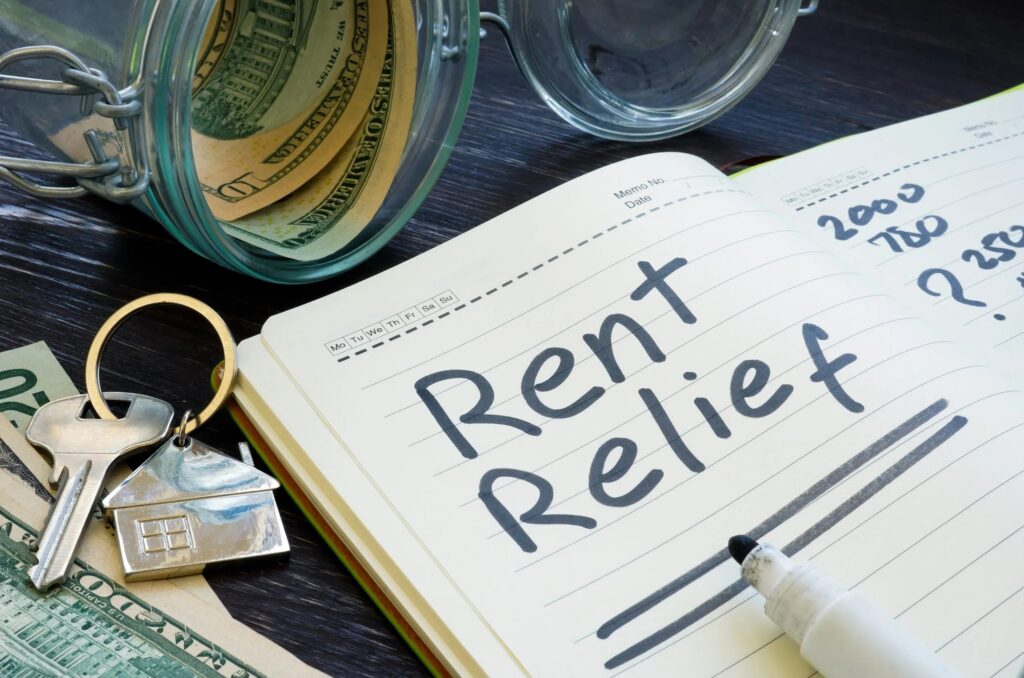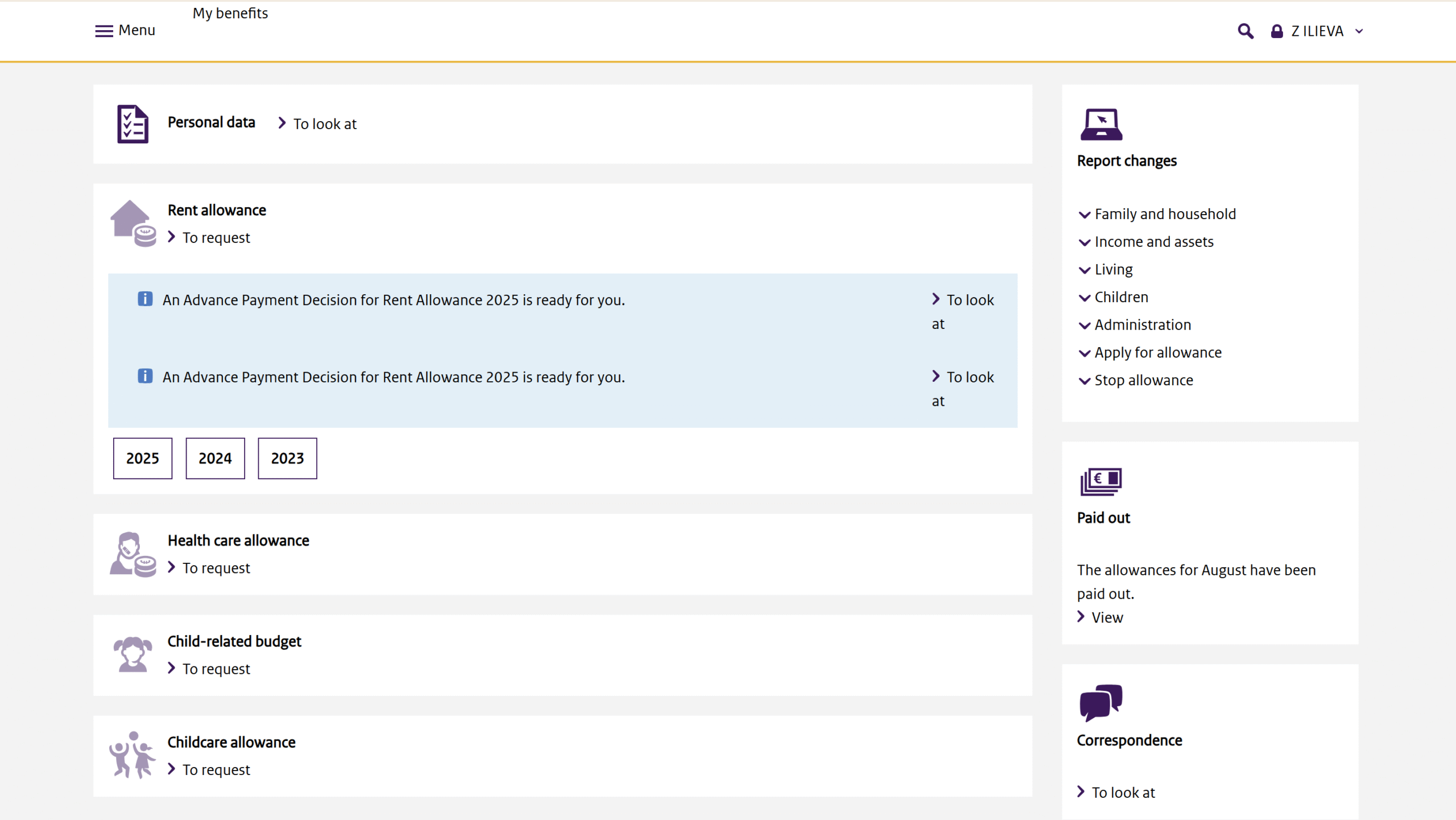Rent Subsidy in the Netherlands: A 2025-2026 WUR Student Guide
Being a student sometimes means living on a budget between tuition fees, groceries, and accommodation rent. Costs can add up quickly, but there’s some good news!
Did you know that you may be eligible to receive compensations from the Government? They can be about rent, healthcare and childcare, but in this blog, we’ll focus on one of the most valuable for a student – the rent subsidy.💶
It is known by many names (Huurtoeslag, rent subsidy, rent allowance, housing benefit, rent benefit) and is quite a deal because you can receive hundreds of euros!
First of all, I have to say that the official Government websites and platforms for the rent subsidy are in Dutch only. But don’t worry! You can easily solve that issue by right-clicking on the text and then selecting the “Translate” option! Another alternative is to ask a friend for help with the translation. After addressing that, let’s get straight into it!
The basics
First things first, you have to know some basic definitions and how things work as for example, what your rent consists of, how it is composed, and what rent subsidy is.
Full Rent = Basic Rent + Service Costs + Taxes
The “full rent” is the rent price you’re paying. It consists of basic rent and service costs.
- Basic rent: The amount of your rent excluding the service costs and taxes.
- Service costs: Costs that you pay for different services. They are: Energy costs for common areas, Cleaning costs for common areas, Caretaker costs, and Costs for service and recreation areas. You may be paying only for some of them, meaning the rest are zero euros.
- Taxes: Those are expenses such as water, electricity, TV, internet, and radio. They are often still included in the rent that you pay, but do not participate in the rent subsidy calculation.
To know the exact amounts of each of those elements described above, refer to your contract or rental agreement with your landlord. If you’re unable to find something, don’t hesitate to ask them. They will tell you what the amounts are or explain how/where to find them.
What is rent subsidy (Huurtoeslag)?
The Dutch Government provides financial support to low-income tenants and students through the rent allowance. If you meet the eligibility criteria, you can receive amounts such as 40% of your rent! This varies per person’s situation and even rooms – you can live in the same building with someone, but if your rents are different, your allowance might vary too.
Eligibility
As said above, to qualify for the subsidy, you should meet the conditions for that. They are the following:
- You are 18 years old or older;
- You live in a self-contained room (you don’t share kitchen, bathroom, or other facilities);
- You are Dutch or have a legal residence permit;
- You are registered in the municipality (meaning you live in the Netherlands);
- You have a BSN number (citizen service number, burgerservicenummer) and DigiD*. You will receive a BSN after registering at the municipality, and it is needed when applying for the allowance. DigiD (digital identity) is used for verification login in governmental websites such as the portal for the subsidy. You will use it every time you need to log in.
*Make sure you know all the details about those. A tip from me is to apply for DigiD as early as possible, since the process may take up to 8 weeks. You can find more information about those in this blog; - Your rent is within the subsidy limits;
For 2025, if you are younger than 23 years old, your basic rent together with the service costs should not exceed €477.20. If you are 23 or older, the rent threshold is €900.07.
There are a few exceptions, so read about them here under “Special situations” below; - You have a valid contract/rent agreement stating the exact rent amounts and its composition;
- Your income is not too high;
Usually, the higher your income, the less rent subsidy you get and if your income is too high, you may not be eligible at all. However, most students with part-time jobs still receive - Your savings don’t exceed €37.395 if you live by yourself. If you live with a partner or another person, your collective assets should be below €74.790;
- Have a proper bank account to which your subsidy can be transferred: Usually, people recommend having a Dutch bank account, but I’m using my home one and it also works.
Calculate your rent subsidy
After the looong list above, you can easily put everything into practice! There’s a calculator available to help you determine if you’re eligible for a rent subsidy. Usually, the official decision won’t be different from that of the calculator, but my advice is to still try and officially apply for a subsidy!
How to apply?
- The application takes place in the Mijn toeslagen (My benefits) portal. To enter it, you log in with your DigiD.
- After logging in click “Apply for allowance” and select the rent allowance
- Fill in the details and answer the living conditions questions: When did you register in the municipality/the date from which your rent starts, your BSN, your address, etc.
Important remark: you can apply for rent subsidy even if you have resided in your room for a while now. Just fill in the correct date and you will receive the money from those previous months as well. - Fill in the basic rent and the service costs amounts.
- Fill in your income: Write €0.00 if you don’t have any. This section excludes any money that you receive from your parents, scholarships or other gifts. It is only about salary from your job.
- Fill in your savings amount.
- Check your details: Be sure they are correct, in this way everything will happen much faster!
- Submit your application.
Pro-tip: If you are not sure what some of the things mean, there is a small question mark next to them. Click on it and there will be an explanation about the certain field.
Possible situation: Submitted your application but later realised that your data/rent amounts is wrong? You can request a change and make the application again. Go to the “Report changes” section and click on “My rent changes“. Then, issue the change from the same period as before (your initial rent starting date) and continue the process as before.
Receiving rent subsidy
Processing (and approval) of your rent allowance application takes from 8 to 13 weeks. The final decision is received my the post mail. You can also find it in the portal in the Rent Allowance section.
The subsidy is transferred to your personal bank account you appointed. Make sure you fill in all the details for it in the My Benefits portal upon registering. You get the allowance on the 20th/21st of each month if working day, if it is the weekend, you receive it on Monday.
Stay informed and on track with changes
It is very important to report if any changes occur. For example, your rent changes, your contract expires, you get a new room with different basic rent and service costs, you move abroad and so on.Keeping your data up-to-date will help you avoid future inconveniences. If it happens that you receive more subsidy than the one you’re supposed to get, you will receive a waiver to pay the outstanding amount back to the Government.
Remark: Sometimes, when your rent increases, the landlord informs the Tax Authorities and you don’t have to issue the change in the system. If that is the case, the landlord will inform you. Also, you can always follow everything through the My Benefits portal (Mijn Toeslagen). All of this will be described and mentioned there, so if you are unsure, check the portal.
Need more help?
After the rent allowance has been covered with all of its specifics and details, it is time to talk about whom to contact if you still have any more questions!
Contact your landlord: If you’re with Idealis, you can reach them at their finance number +31317472502 or email the manager of your building. You can find the information for the latter on the website previously linked.
Call the Dutch Tax Authorities: 0800-0543. Find more information here, as well as other options for contact here.
Student Service Centre: If you want to contact someone from the University, it is best to get in touch with the Student Service Centre by filling out the Contact Form or emailing them at SSC@wur.nl
Phew! That was quite a bit, right? It might seem like a long exhausting process, but in the need it’s not that bad, and thrust me, it’s definitely worth it!
I hope this blog was helpful to you! You can also find information about the whole process at the official Government’s website as well as on WUR’s page.
Pro-tip: Ask your friends and the people that live in your building (ex. in your building’s community WhatsApp group). Everyone is very helpful and people that have been through the application can teach you the best!😉
See you around,
Zlatoslava:)




